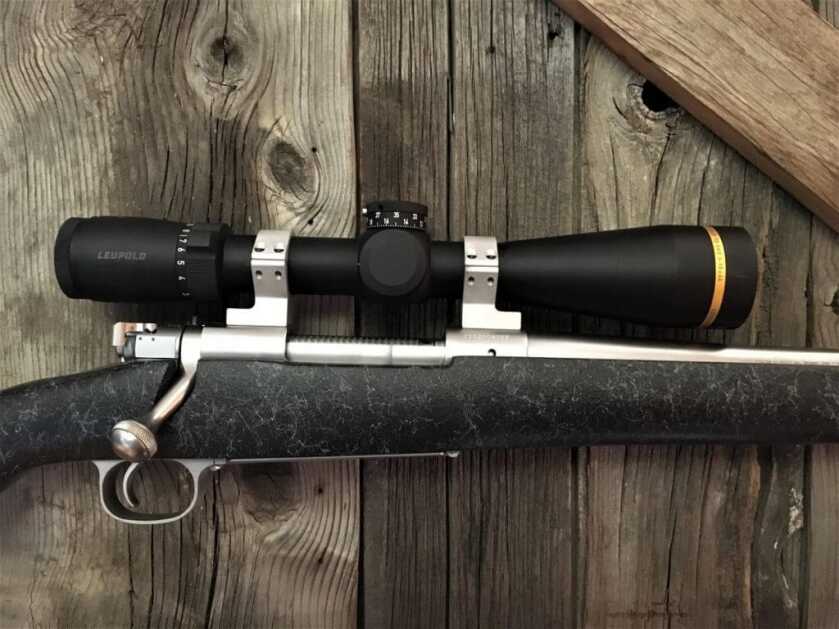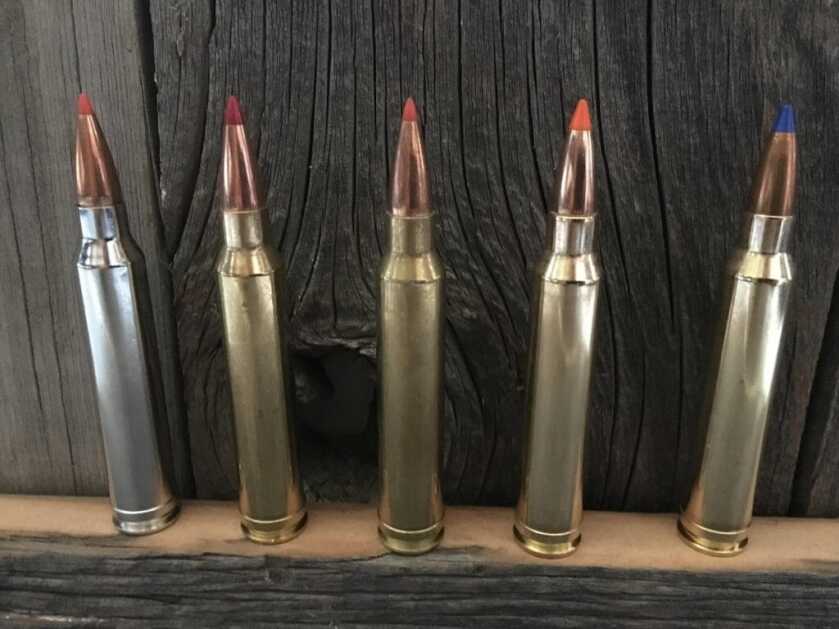
Choosing a Scope, Ammo, and Accessories
In Part One, I explained why I chose the rifle and caliber I did for the several hunts I’m lucky enough to have on the books for the fall. I have a brief window to go seek out my own caribou and moose if the hunt schedules line up accordingly for the outfit I work for. After speaking with some friends in the outdoor industry and running it by my wife, I landed on a Winchester Model 70 Extreme Weather SS in .300 Winchester Magnum. The chief reason behind the decision was familiarity as I‘ve shot a Model 70 most of my life, and availability of ammo for the Win Mag. Practically speaking, I’ll be able to hunt most of Alaska’s game with this rifle as time and life permits given the vast amount of available loads and bullet weights for the caliber.
Scope
With rifle and caliber chosen, I switched my attention to finding a good piece of glass to mount atop the Model 70. My intent when choosing a scope was not to have a system for shooting game at long distances, preferring my shots several hundred yards or less, but to have the capability for a longer follow-up shot if needed. While several species of Alaskan game may avail themselves to longer shot situations like Dall sheep or mountain goats where topography can limit one’s approach distance, most big game animals in the North Country are quite hearty and one-shot kills aren’t always the rule. A rutted up bull moose can take a vital hit, disappear into the alders and show himself moments later getting out of Dodge. While the shot placement and bullet performance may be ideal, there’s simply a lot of mass to slow down and I’d rather hedge my bets and have the ability to seal the deal in a quick, humane way.

Given the anticipated use, I wanted a variable power scope with a wide range of magnification, capable of close-up work in the brush, yet with the option of cranking it up for a longer shot if the situation required. After talking to several knowledgeable folks whose opinions I hold in high regard, I landed on a Leupold VX-5HD 3-15×44.
With the generous magnification range, and equipped with Leupold’s Custom Dial System, the choice wasn’t a difficult one. For those who aren’t familiar, the Custom Dial System lets you quickly dial your elevation adjustment for different ranges, it can also be upgraded to a custom dial that’s laser-etched with your own ballistic information, making it that much easier to customize to your particular set up. If you purchase a scope equipped with CDS, Leupold will build one custom-etched dial to your specifications.

Specifications for the Leupold VX-5HD 3-15×44 CDS-ZL2 are below:
Weight (oz) 19.7
Linear FOV (ft/100 yd) – Low 38.3
Linear FOV (ft/100 yd) – High 7.9
Linear FOV (m/100 m) – Low 12.76
Length (in) 13.53
Linear FOV (m/100 m) – High 2.62
Length (cm) 34.3
Eye Relief (in) – Low 3.70
Eye Relief (in) – High 3.82
Eye Relief (mm) – Low 94
Eye Relief (mm) – High 97
Objective Diameter (in) 1.7
Weight (g) 558
Elevation Adjustment Range (MOA) 75
Elevation Adjustment Range (MIL) 21.8
Windage Adjustment Range (MOA) 75
Windage Adjustment Range (MIL) 21.8
Exit Pupil (mm) – High 2.9
MSRP $1234.99
Scope Mounts
My big purchases had been made, now it was time to get down to the smaller but no less important details to complete the rifle. I married the scope to my Model 70 with a set of Talley lightweight scope mounts, made of a sturdy alloy that doesn’t have a joint between the scope and rifle, there’s one less moving part and saves weight in comparison to steel rings. Initially, I was curious to see how the lightweight rings would perform under the heavier recoil of larger .30 caliber loads, but after several boxes shot, they’re in great shape and I haven’t had any issues with losing zero.
Ammunition
Due to the rather large niche my new rifle is going to be required to fill, I wanted to shoot a variety of ammo through it to see how it performed with various manufacturers’ products and bullet weights. Per Winchester’s website, “With quality optics, premium ammunition, and good shooting conditions, 1 MOA accuracy can be expected — if you, your ammo and your optics are up to it.” I was, so I headed to the range with a bag full of rounds and expectations. After several hours of bench shooting, my consensus was that of Winchester, the rifle was holding around a 1 to 1.5 MOA average with just about everything I closed the bolt on. Two loads, a Black Hills Ammo 165 gr. Hornady GMX and Norma’s 170 gr. Tip Strike averaged sub-MOA. All of the loads tested have a proven history of performance and given the size of game being hunted, would work well at reasonable ranges.

| Group 1 | Group 2 | Group 3 | Average | |
| Norma 170gr | .7 | 1 | .9 | .87 |
| Norma 180gr | 1.6 | 1.4 | 1.2 | 1.4 |
| Black Hills 165gr | .8 | .9 | 1 | .9 |
| Black Hills 200gr | 1.6 | 1.3 | 1.7 | 1.53 |
| Hornady 180gr | 1.1 | .9 | 1 | 1 |

Accessories
Given that the rifle is going to be spending most of its field days in Alaska, I wanted a good scope cover and sling to protect my investment. Flip-up style scope caps have their place in the hunting world but I opted to go with a whole cover style, wading through alders and brush can be hard on glass and I wanted a maximum amount of protection. I chose the Scope Slicker from Alpine. It’s weatherproof and comes with a built-in microfiber lens cleaners on either end as well as a secure mounting system that allows you to flip up either end yet keep it attached to the scope. It checked all of the boxes I wanted.
Depending on the time of year and game being pursued, a hunter can find themselves spending every waking hour out of the tent in their raingear. Few things are as frustrating and take your mind out of the game than constantly fighting your rifle sling on a wet rain jacket all day. For this reason, I chose a Butler Creek Comfort Stretch sling with non-slip grippers on the back. If my rifle’s not in my hands, I want it out of the way so I can focus on the task at hand.

Conclusion
While I gathered information and advice from different people throughout the last several months, from lifelong Alaskan residents to gun writers, I tried to follow the old adage: Get the best you can afford. There’s not a one-size-fits-all in any realm of the firearm industry, certainly when it comes to the vastness of hunting opportunity in Alaska, from blacktail on Kodiak to giant brown bear on the Peninsula, Dall sheep in the Chugach to caribou on the Aleutian Chain. I covered as many bases as I could and believe this setup will serve me well for years to come. Many people do it for a lot less money and some a lot more. I believe the most important thing is familiarity with one’s specific rifle. Familiarity translates to accuracy and accuracy to more epic days in the field which is what hunting Alaska is all about.


keep your 300 win mag. give me my old 30 06 any day my old remginton mo. 760 made back in the 60s is a great shooters and has taken a boat load of white tails in its life and with a great scope and right round will take down anything in alaska
In this age of range finders which work in conjunction with your scope, why not use one of those with a ballistic program that will automatically set up your sight for you? They are dependable and narrow the possibility of a poor shot.
Hi Ray,
I actually have a .375 Ruger for my bear rifle so I opted for the .300 for the caribou and possibly moose.
Did you consider 375 H&H. Actually good for big game when close up but also at long range plus ammo readily available every where with various bullets?
Recently I went thru a similar decision process. Similar outcome. Minimal spin or hype. Good article. Good sound advice.
Let us know how your fall hunts turn out on Hunt 365.